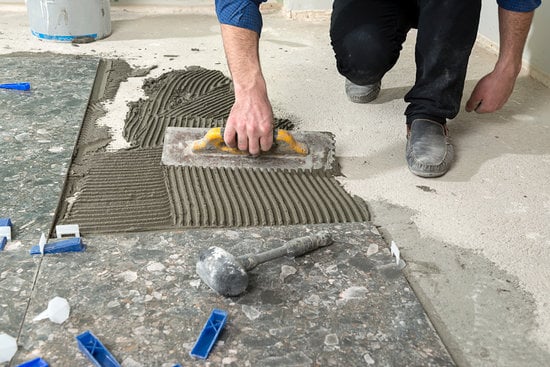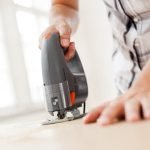Are you struggling with poor cell phone reception at home? In this article, we will explore how you can improve cell phone reception at home to ensure that you never miss an important call or experience dropped connections.
Having good cell phone reception is essential for staying connected, and poor reception can lead to missed calls, slow internet speeds, and frustration. Understanding the factors that affect cell phone reception and implementing strategies to improve it can make a significant difference in your overall communication experience.
Poor cell phone reception at home can lead to a range of problems, including difficulty making or receiving calls, dropped connections during important conversations, and slow internet speeds. In today’s connected world, this can be a major inconvenience for both personal and professional communication.
Factors such as distance from the nearest tower, building materials, and environmental factors can all impact your cell phone reception. Additionally, different network technologies like 3G, 4G, and 5G have varying levels of coverage and speed capabilities that can affect your overall reception quality.
To address these issues and improve your cell phone reception at home, it’s essential to understand the various strategies and equipment available to enhance signal strength. Conducting a signal strength test using the feature on your phone can help you identify areas with low reception (dead zones) within your home.
With this information in hand, you can then explore options such as installing a signal booster or using Wi-Fi calling to improve your overall connectivity. Stay tuned as we delve deeper into each of these topics to help you achieve better cell phone reception at home.
Understanding Cell Phone Reception
When it comes to understanding cell phone reception, there are several factors that can impact the quality of your signal. One of the primary factors is the distance from the nearest cell tower. The farther away you are, the weaker your signal is likely to be. Additionally, building materials such as concrete and steel can also interfere with the transmission of signals, leading to poor reception indoors. Environmental factors like trees, hills, and weather can also affect cell phone reception.
In addition to these physical factors, the type of network you are using also plays a role in determining your cell phone reception. 3G networks have lower data speeds and may not provide as strong a signal as 4G or 5G networks. As technology advances and more areas are covered by 5G networks, users in those areas are experiencing faster data speeds and better overall reception.
For individuals looking to improve their cell phone reception at home, understanding these factors is crucial in identifying potential solutions for boosting their signal strength.
One way to understand your cell phone reception at home is by utilizing the signal strength feature on your phone. Most phones have a built-in tool that displays the current signal strength in decibels (dBm). By conducting this test in different locations around your home, you can identify areas with poor reception (dead zones) and pinpoint where improvements are needed.
It’s important when conducting a signal strength test to move around different areas of your home such as bedrooms, living rooms, basements, and outdoor spaces since each location could have varying levels of cellular signals. By doing so, you can determine which areas need improvement and begin formulating a plan to enhance your cell phone reception at home.
Conducting a Signal Strength Test
To ensure that you are effectively improving your cell phone reception at home, it is important to first conduct a signal strength test. This will help you identify the areas in your home with poor reception (dead zones) and determine the current level of reception throughout your house. Below are steps to conduct a signal strength test:
1. Use the Signal Strength Feature on Your Phone: Most smartphones have a built-in feature that allows you to check the signal strength in a specific area. You can usually find this feature in the settings or network section of your phone. Use this feature to gauge the current reception at different locations around your home.
2. Conduct the Test in Various Locations: It is essential to conduct the signal strength test in various locations around your house, including different rooms and outdoor spaces. This will give you a comprehensive understanding of where dead zones may be located and which areas have the best reception.
3. Note Down Results: As you conduct the tests, make sure to note down the results for each location. This will help you pinpoint specific areas that need improvement and track any improvements after implementing strategies to boost cell phone reception.
By conducting a thorough signal strength test, you can effectively identify dead zones in your home and determine where improvements are needed for better cell phone reception.
Remember, understanding the current state of cell phone reception in your home is crucial before taking any further steps to improve it.
Identifying Dead Zones
When it comes to improving cell phone reception at home, one of the crucial steps is identifying dead zones. Dead zones are areas in your home where the cell phone signal is weak or non-existent, leading to dropped calls and slow data speeds. Here are some tips on how to identify these problematic areas:
1. Conduct a Signal Strength Test: Use the signal strength feature on your phone to determine the current reception at home. Walk around your house and take note of the signal bars or numerical signal strength readings in different locations. This will help you pinpoint specific areas with poor reception.
2. Pay Attention to Call Quality and Data Connectivity: Take note of any dropped calls, static during calls, or slow data speeds in different parts of your home. These issues can indicate the presence of dead zones.
3. Utilize Apps and Tools: There are various apps and tools available that can help you map out the cell phone reception in your home. These tools can provide insights into signal strength, carrier coverage maps, and potential sources of interference.
Identifying dead zones in your home is an essential step toward improving cell phone reception. Once you have identified these problematic areas, you can then explore solutions such as signal boosters, Wi-Fi calling, and other strategies to address the connectivity issues in those specific locations.
Improving Cell Phone Reception at Home
Having poor cell phone reception at home can be frustrating and inconvenient. It can lead to dropped calls, slow internet speeds, and overall poor call quality. There are several strategies that you can implement to improve cell phone reception at home and ensure that you stay connected at all times.
One effective way to improve cell phone reception at home is by installing a signal booster. A signal booster works by amplifying the existing signal, allowing you to make clear calls and enjoy faster data speeds.
When choosing a signal booster, it’s important to consider the size of your home and the strength of the outside signal. There are various types of signal boosters available on the market, so it’s essential to select one that best suits your specific needs.
Another option for improving cell phone reception is by utilizing Wi-Fi calling. Most modern smartphones have the capability to make calls over Wi-Fi networks, which can be extremely useful in areas with poor cellular coverage. To enable Wi-Fi calling on your phone, simply go into your device’s settings and turn on the feature. This will allow you to make and receive calls using your Wi-Fi connection instead of relying solely on cellular service.
Adjusting your phone settings can also have a significant impact on improving cell phone reception at home. For example, disabling certain features like Bluetooth or GPS when not in use can help conserve battery life and optimize signal strength. Additionally, keeping your phone software up to date ensures that you have access to the latest network enhancements and bug fixes.
| Cell Phone Reception Improvement Strategies | Description |
|---|---|
| Install a Signal Booster | Amplifies existing signal for clearer calls and faster data speeds |
| Use Wi-Fi Calling | Allows calls over Wi-Fi networks in areas with poor cellular coverage |
| Adjust Phone Settings | Disabling unused features like Bluetooth or GPS can conserve battery life and optimize signal strength. |
Choosing the Right Equipment
When it comes to improving cell phone reception at home, choosing the right equipment is crucial. One of the most effective devices for boosting signal strength is a signal booster, also known as a cell phone signal amplifier.
These devices work by capturing the existing outdoor cell signal, amplifying it, and then rebroadcasting the enhanced signal inside your home. When selecting a signal booster, it’s important to consider the size of your home, the strength of the outside signal, and the number of users and devices that will be using the booster.
There are different types of signal boosters available on the market, including those designed for small homes or apartments, as well as more powerful boosters for larger homes or buildings. Some boosters also support multiple carriers simultaneously, which can be beneficial if you have family members or guests who use different cell phone networks. It’s important to choose a booster that is compatible with your specific cell phone provider and technology (3G, 4G, or 5G).
In addition to signal boosters, other equipment such as antennas and amplifiers can also help improve cell phone reception at home. Directional outdoor antennas can be used to capture stronger signals from distant cell towers, while indoor antennas help distribute the boosted signal throughout your home. Amplifiers can also be added to further enhance the boosted signal’s strength.
Overall, investing in high-quality equipment that is tailored to your home’s specific needs is key to significantly improving cell phone reception and call quality.
| Equipment | Finding the Right One |
|---|---|
| Signal Boosters | Consider size of home, outside signal strength and number of users |
| Antennas | Outdoor directional antennas can capture stronger signals while indoor antennas help distribute boosted signals indoors |
| Amplifiers | Adds further enhancement to boosted signals’ strength. |
DIY Solutions
Improving cell phone reception at home doesn’t always require expensive equipment or professional installation. There are several do-it-yourself (DIY) solutions that can help boost your signal and improve call quality and data connectivity.
Aluminum Foil Trick
One DIY solution for improving cell phone reception at home is the aluminum foil trick. By placing aluminum foil behind your phone, you can redirect the signal towards the nearest cell tower. The reflective nature of aluminum foil helps to bounce the signal in the desired direction, potentially improving reception in areas with poor connectivity. This simple trick is worth a try and may provide noticeable improvement in signal strength.
Homemade Signal Booster
Another DIY solution involves creating a homemade signal booster using common household items such as a copper wire, a paper clip, and a metal hanger. By following step-by-step instructions found online, you can construct a makeshift signal booster that may improve cell phone reception within your home. However, it’s important to note that these DIY options are not guaranteed to work for everyone and may have limited effectiveness in some cases.
Limits of DIY Solutions
While DIY solutions offer an affordable alternative to traditional methods of improving cell phone reception, they also have their limitations. These tricks and homemade devices may provide only minor improvements in signal strength and call quality. Additionally, some DIY solutions could potentially interfere with network operations or cause damage to your device if not implemented correctly. Therefore, it’s important to proceed with caution when attempting these techniques and be aware of their potential drawbacks.
Conclusion
In conclusion, having good cell phone reception at home is essential for staying connected with friends, family, and colleagues, as well as for accessing important information and services. Poor reception can lead to dropped calls, slow internet speeds, and frustration. Understanding the factors that affect cell phone reception, conducting signal strength tests, and identifying dead zones are important steps in improving reception at home.
There are various strategies to improve cell phone reception at home, including installing a signal booster, using Wi-Fi calling, and adjusting phone settings. Choosing the right equipment such as signal boosters, antennas, and amplifiers is crucial in effectively enhancing reception. Additionally, there are DIY solutions like using aluminum foil to redirect signals or creating a homemade signal booster which may be effective for some individuals.
It’s important for readers to take action in improving their cell phone reception at home by considering the tips and strategies outlined in this article. By doing so, they can enhance their overall experience with their mobile devices while at home. For further reading and assistance on this topic, readers are encouraged to seek out additional resources to address specific concerns regarding cell phone reception.
Frequently Asked Questions
How Can I Boost My Cell Phone Signal in My House?
Boosting your cell phone signal in your house can be done in a few different ways. First, you can try moving closer to a window or going outside as this can often improve signal strength.
Another option is to use a signal booster device, which can amplify the existing signal and improve coverage in your home. Additionally, Wi-Fi calling is a feature available on many phones that allows you to make calls over a Wi-Fi network rather than relying on cellular signal.
How Can I Improve My Mobile Signal Strength Indoors?
Improving mobile signal strength indoors may require some troubleshooting. One way to do this is to move around your house and identify areas with better signal reception.
You can also try using a cell phone signal booster, which works by capturing an existing weak signal, amplifying it, and then rebroadcasting it within the area you need coverage. Other options include using Wi-Fi calling or enabling advanced calling features on your phone if available.
Do Homemade Cell Phone Signal Boosters Really Work?
Homemade cell phone signal boosters may not always be effective or reliable. While there are DIY methods and makeshift devices that claim to improve signal strength, they may not always produce significant results and could potentially interfere with cellular networks.
It’s generally recommended to use commercially-available and certified signal boosters for best results and network compatibility while avoiding homemade solutions that could cause more harm than good to your cellular service.

I’m thrilled to have you here as a part of the Remodeling Top community. This is where my journey as an architect and remodeling enthusiast intersects with your passion for transforming houses into dream homes.





